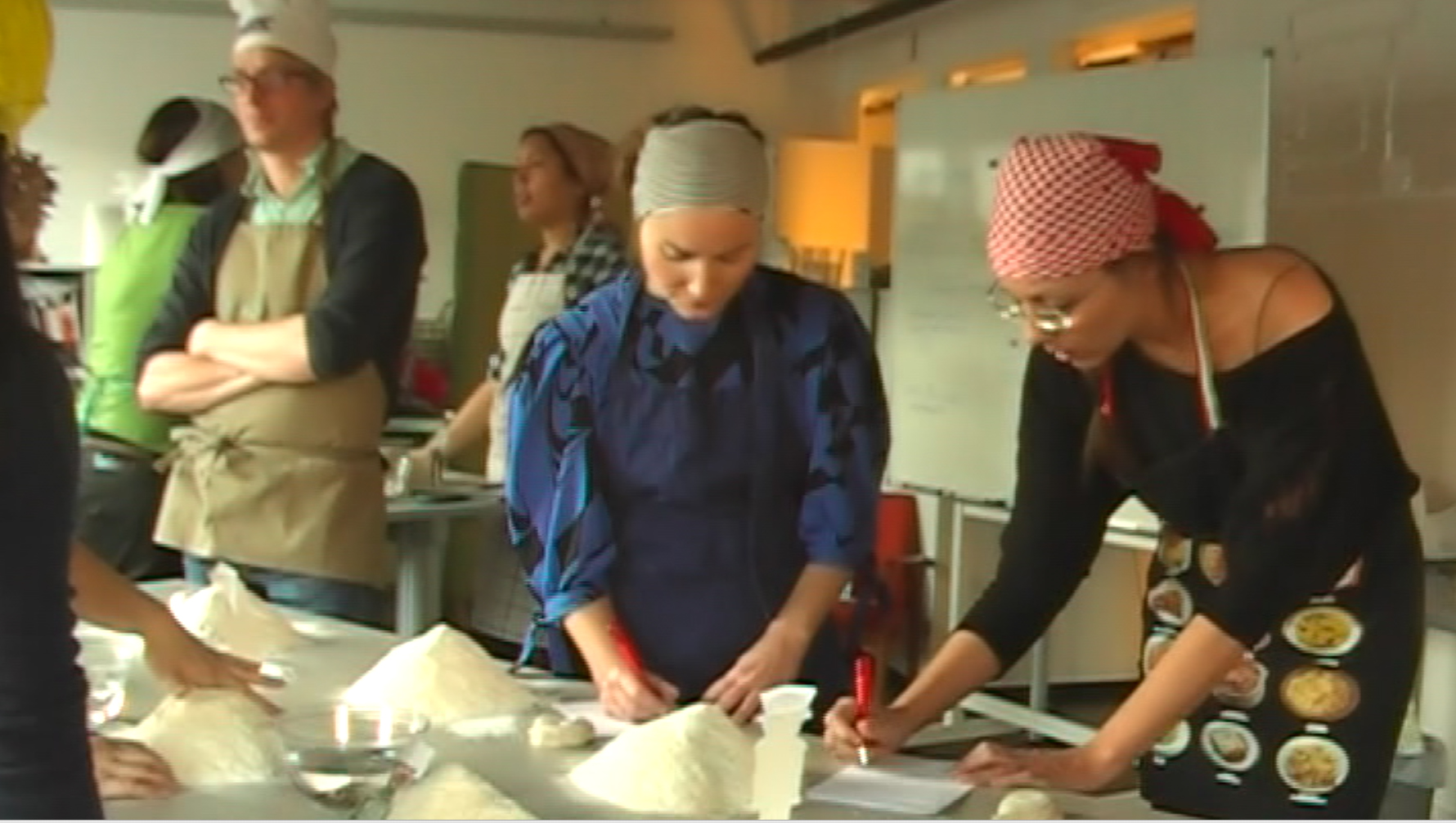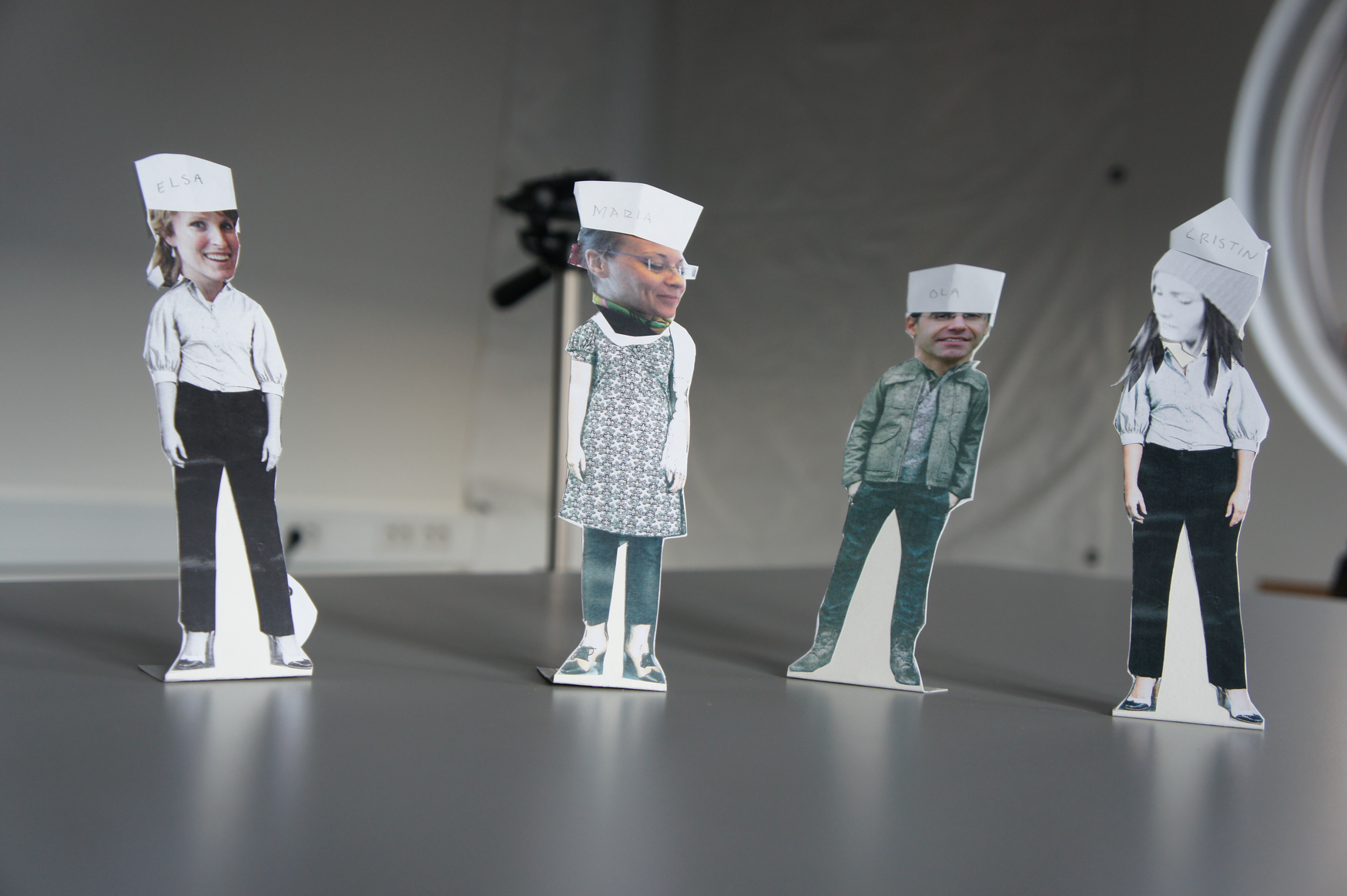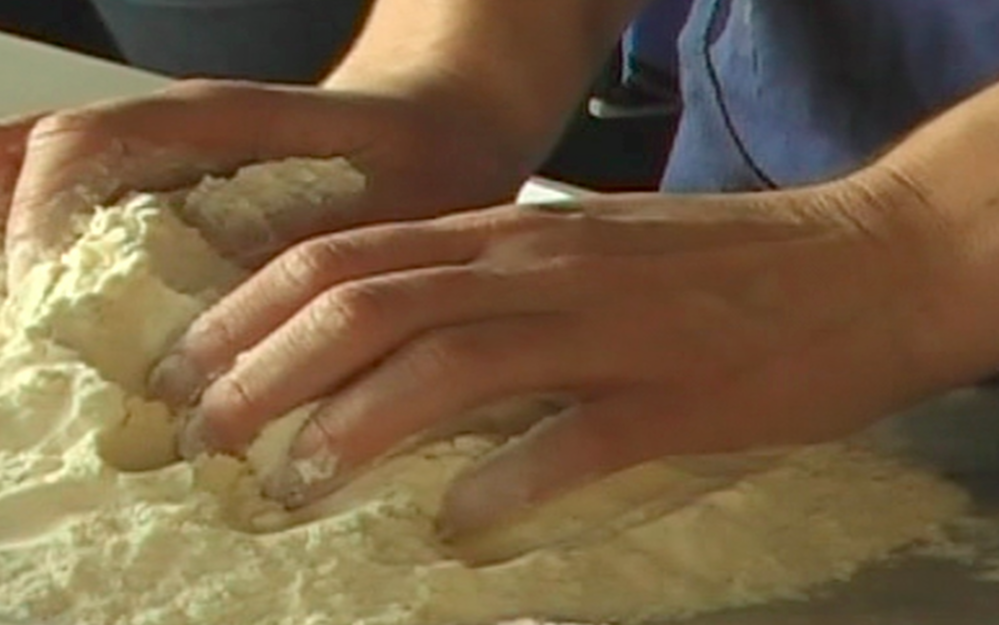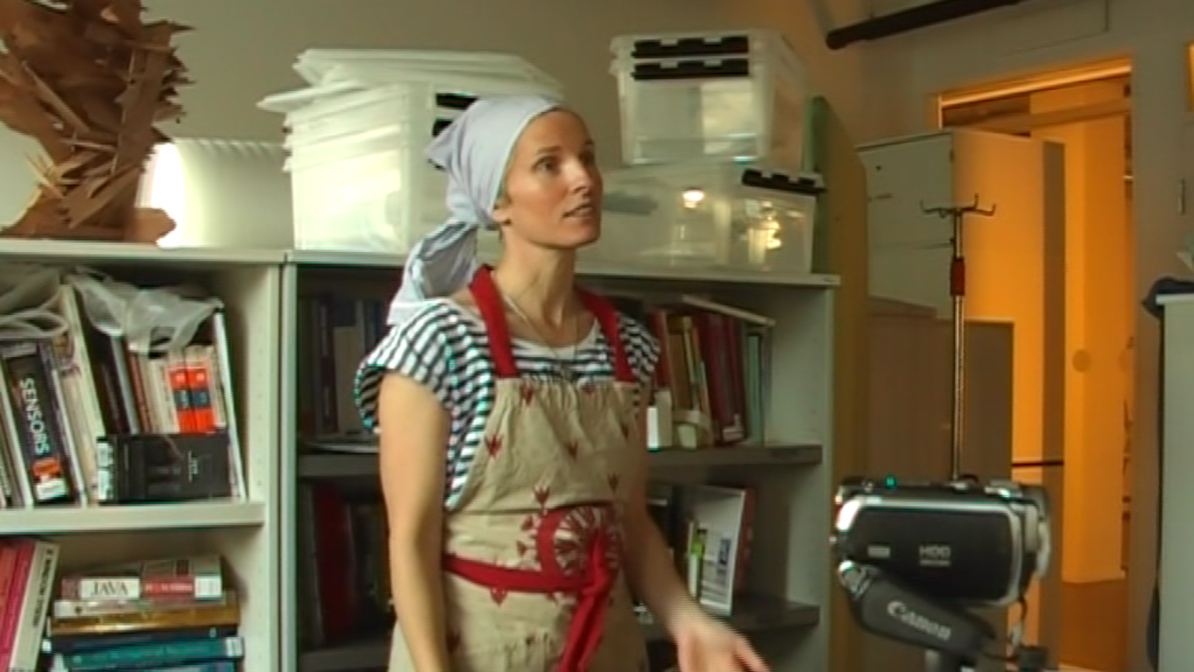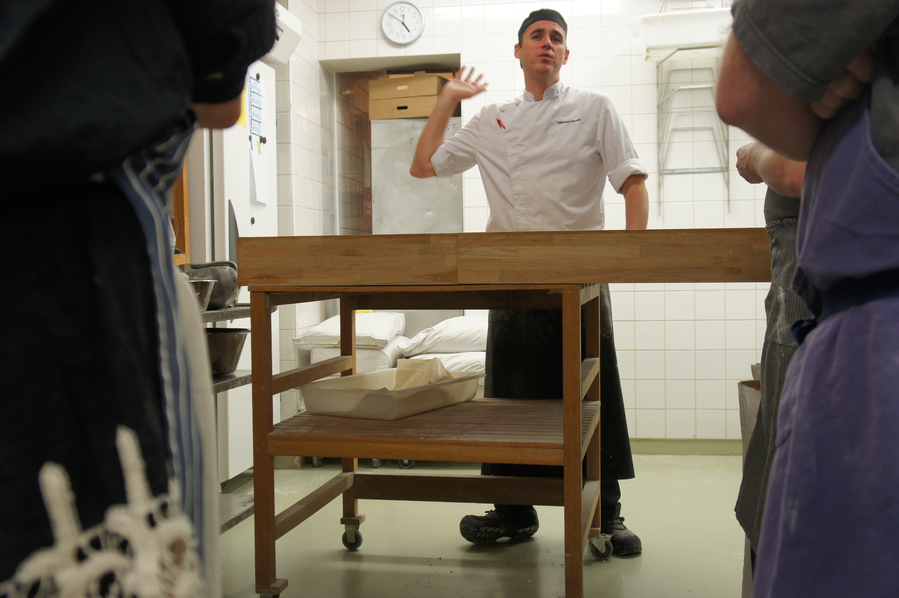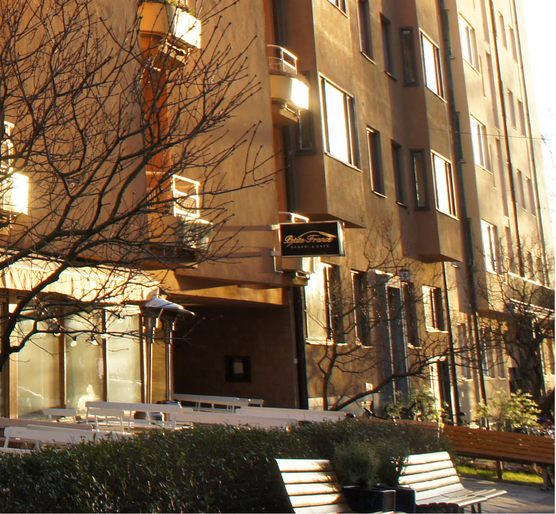Process
The process of our research was performed through several phases. We began by learning from Sebastien Boudet, who shared his knowledge of sourdough baking practice, theory and ingredients. In this phase the design researcher Elsa was invited to a course in sourdough baking that Sebastien Boudet led at Petite France, the restaurant and bakery he founded in 2008. After that we used the artistic method known as ‘Aesthetic Laboration’ (A-Lab) (Akner Koler 2007) to explore felt time in a research context. Elsa participated in A-labs that were ongoing in another research project (nanoform 2006) to gain further understanding of what it would be like to be part of an A-lab and what kind of knowledge it could produce.
We collaborated with a film maker in planning, filming and editing the material produced from the A-Lab. The material from the A-Lab consisted of recorded sessions, videos, photos, notes, and sketches. Right after the A-Lab, we made quick, ‘naïve’ interpretations in the form of a range of short videoclips.
In several phases of analysis, we re-visited the material to articulate how the research method could be a viable path for imagining and prototyping felt time in interaction design.
Methodology
This research was designed to explore how the culinary practice of Sourdough Baking can help interaction designers prototype a felt time repertoire. In our research there was an intended intimate relationship between interaction design and sourdough baking activities. The process aimed to lead to both academic and artistic outputs and to promote the aesthetics of felt time, that is, how time was experienced through ingredients and baking activities, and how the experience of time was shaped and manipulated through the intimate interaction between the baking process and the baker.
An important aspect of our research is that we involve ourselves in the activities (Akner Koler et al 2018). This helps us become sensitized to the research question and creation. The research activity presented questions about felt time and interaction design, and also enabled improvisational and exploratory participation by the individuals who were there.
Our methodology drew on several approaches including speculative design (Dunne & Raaby 2013), research through design (Gaver 2012), somaesthetic design (Höök 2018) and Research Creation RC (Badani 2015).
Aesthetic Laboration; 'Kneading Time'
The ‘Aesthetic Laboration’ method was originally developed to build aesthetic strategies for developing understandings of complexity and transformation (Akner Koler 2007). The main features of this approach are that participants engage in phenomena through embodied experience, i.e. they explore and experience a phenomenon through their haptic abilities, movements and senses (Akner-Koler & Ranjbar 2016; Hummels et al 2007).
The approach emphasizes the importance of creating a playful setting that supports aesthetic exchange and reasoning between participants around a phenomenon. The participants should take part in the activities at their own levels and from their own point of views. By listening to each other’s reactions, reasoning and interactions within the ongoing activity, participants gain further insight into how other people in the group relate to the phenomena.
Twelve people fit into one large office space at our research center. Individuals were invited who were more or less part of our networks. They were in different ways involved in temporality and/or embodied thinking: A psychotherapist, a yoga teacher, design researchers, interaction- and industrial designers and HCI researchers researching embodied thinking in sports, a business developer involved in a stress management product with biosensors, the filmmaker, Sebastien, Cheryl and Elsa.
To prepare the A-Lab that we called ‘Kneading Time’ we created a common space-time setting that would uncover expressions, experiences, interaction and emotions rather that measurements and concrete answers. One large office room at the research center was carefully prepared for the sourdough baking exploration. Work tables were cleaned. Shelves and books were covered with big cloths. Colleagues were informed that there might be some noise. Placement paper dolls portraying each participant were placed on the tables and arranged for a dynamic blend of people.
At each place we put a pile of flour, salt and a water-bowl. Participants were asked to wear aprons and head protection for both practical and psychological reasons: for keeping clothes clean from flour and dough and because we thought the ritual of wearing a ‘baker’s uniform’ might help the participants to enter our space-time setting and involve themselves more deeply in the material investigations.
Kneading Time started with Elsa, the interaction design researcher, explaining the procedure and intention of the day, and after that, Sebastien introduced and guided us through blending, resting, kneading and forming. These four phases belong to the first workday in sourdough baking. After that, the dough is ready for the last long fermentation. Through Sebastien’s guidance, we gained access to his expertise as a bread creator, trusting his deep internalized knowledge of what and how things can be done with the material at hand in order to create something aesthetically fulfilling and satisfying. This is to say that Sebastien functioned as a somatic connoisseur (Schiphorst 2009).
Since Kneading Time was performed in an office setting, where we only have microwaves for heating food it was not suitable to bake the bread in the oven. Everyone took their piece of dough home for fermentation overnight, to be baked in their own oven the next day. To provide the anticipated taste and haptic experience of the final outcome, Sebastien brought loaves of bread for everyone to eat in the break. We focused our research articulation on the activities that we performed in our common space-time setting.
To approach time by sourdough baking in a research context, we had to plan carefully, but while we had our intentions for the exploration, we also knew we could not fully anticipate what would appear. In this way, the research incorporated uncertainty and a readiness to observe and later analyze whatever emerged. The research presented here did not intend to produce solutions, rather it allowed interesting things to emerge and support a conversation around the research question/possible approaches to explore and prototype felt time in interaction.
